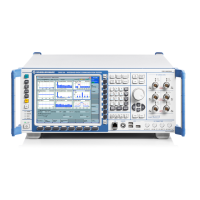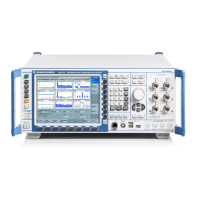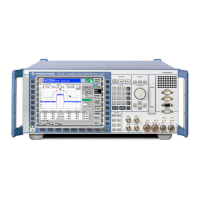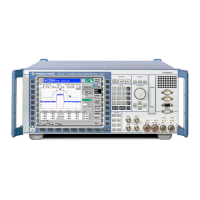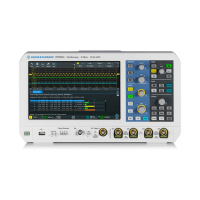Command Reference
R&S
®
CMW500
197User Manual 1173.9463.02 ─ 02
MMEMory:STORe:MACRo..............................................................................................199
*DMC '<MacroLabel>', <MacroSequence>
Creates a macro, defined by an identifier string '<MacroLabel>' and the macro contents
<MacroSequence>. If the macro label exists already, the macro contents are overwritten.
Macro execution must be enabled using *EMC ON. Macros are deleted when a remote
connection is closed but can be saved to a macro file (MMEMory:STORe:MACRo) for later
re-use.
Note: Avoid using macro labels which are identical with any of the remote control com-
mands supported by the R&S CMW500. In contrast to SCPI stipulations, remote com-
mands have priority over macros.
Parameters:
'<MacroLabel>' String parameter, used to execute the created macro and to ref-
erence it in other macro commands (e.g. MMEMory:STORe:
MACRo, *GMC?, *RMC).
<MacroSequence> Block data element defining the macro contents, typically a
sequence of remote control commands. #0 introduces a data block
of indefinite length. See chapter 6.7.1, "Macro Contents and
Macro Commands", on page 181.
Alternative data format: Shorter command sequences may be
entered as strings with a maximum length of 1023 characters.
Example: See Macro Programming Examples
Usage: Event
Firmware/Software: V2.1.10
*EMC <Boolean>
Enables or disables the execution of all macros that are defined for the active remote
connection.
Note: In contrast to SCPI specifications, macro execution is disabled by default.
Parameters:
<Boolean> ON | OFF
Enable or disable macro execution. In the disabled ("OFF") state,
macros in a command sequence are not expanded. The R&S
CMW500 will generally issue an error message –113, "Undefined
header;<MacroLabel>".
*RST: OFF
Example: See Macro Programming Examples
Firmware/Software: V2.1.10
Instrument-Control Commands

